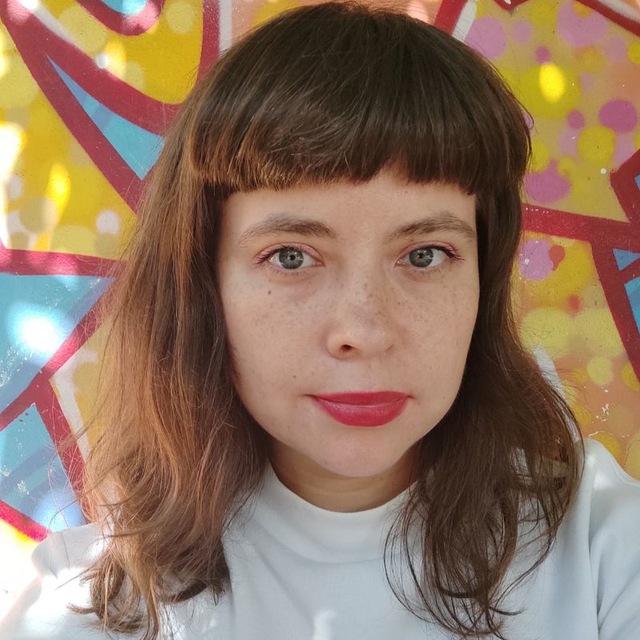THE EARTH IS FLAT AGAIN
The Earth is Flat Again / Ziemia znów jest płaska, Muzeum Sztuki, Łódź, September 24, 2021 – February 27, 2022
The impetus to rethink the role of the museum characterizes the overarching exhibition program of the Muzeum Sztuki in Łódź, Poland, which historically emerged in the 1920s from the international modern art collection of the Polish avant-garde “a.r.” group and its members, such as artists Władysław Strzemiński and Katarzyna Kobro. The ideas of the “a.r.” group as well as other radical proposals from the beginning of the 20th century to redefine the concept of the museum are currently on display in the exhibition The Avant-garde Museum (Oct 15, 2021-May 1, 2022) and relate well to the museum’s impressive new permanent exhibition titled Atlas of Modernity. Exercises.(Agnieszka Pindera, Jarosław Suchan, The Avant-garde Museum (exhibition presented by Muzeum Sztuki, Łódź, October 15, 2021-May 1, 2022). https://msl.org.pl/the-avant-garde-museum-exhibition/)Inaugurated in October 2021, the permanent exhibition is set up as a roadmap through the museum’s collection that instead of following a chronological or geographical order leads the visitor to explore a series of concepts that define the “modernity” of the 20th and 21st century. Ranging from themes such as “autonomy”, “progress”, “experiment”, “emancipation” and “catastrophe”, the permanent display showcases not just the museum’s incredible art collection, but the reflexive and radical character of artistic and exhibition practices.(Atlas of Modernity. Exercises, ed. Leszek Karczeski, Daniel Muzyczk, Maja Wójcik (Łódź: Muzeum Sztuki, since October 1, 2021), exhibition leaflet.)
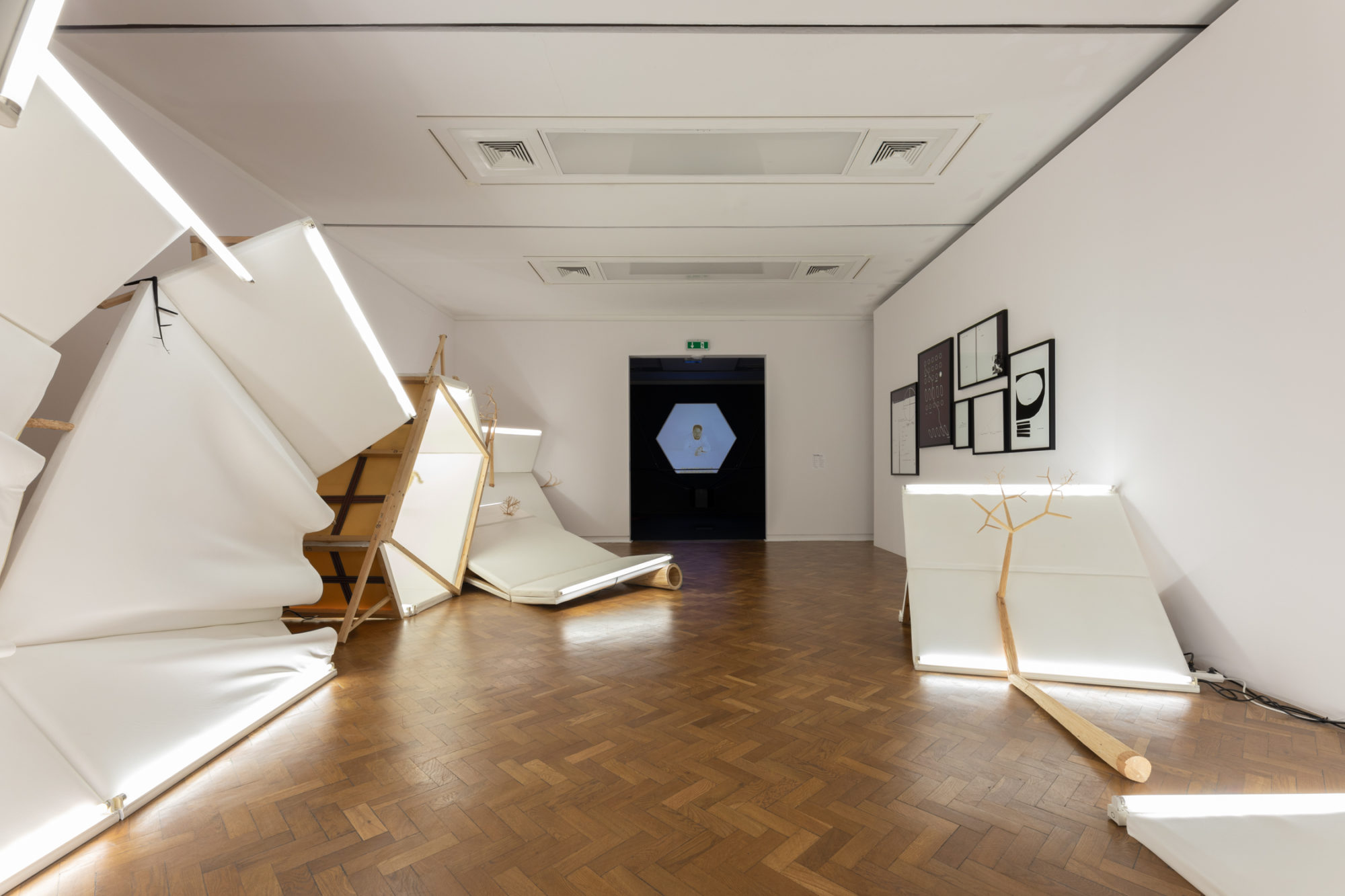
The Earth is Flat Again, exhibition view. Photo by Anna Zagrodzka, courtesy of Muzeum Sztuki
Today, in contrast to predictions of classical theorists, as philosopher Sandra Harding writes in Sciences from Below, modernity in Western societies seems to be shrinking rather than expanding.(Sandra Harding, Sciences from Below: Feminisms, Postcolonialities, and Modernities (Durham: Duke University Press, 2008), p. 12.) Its contemporary landscape—based on Western political, scientific, and cultural advances that are hegemonically enforced as universal and neutral categories—is being redefined by multiple modes of thinking and practice. Inflamed by the context of the global pandemic and environmental destruction, these include alternative productions of indigenous, postcolonial, and feminist knowledge, the increasing interest in magical thinking, witchcraft, tarot, and astrology as well as the conspiratorial thinking of flat earthers and anti-vaxxers.
The issue that arises is how to discern which of these attempts offers a truly meaningful and emancipatory vision of the future. Another temporary exhibition titled The Earth is Flat Again—by Jakub Gawkowski, a young curator at the Muzeum Sztuki—tackles exactly this dilemma by posing a related question on “how to critique, expand, and challenge scientific paradigms without playing the part of denialists?”(The Earth is Flat Again, Jakub Gawkowski (Łódź: Muzeum Sztuki, September 24, 2021–February 27, 2022), exhibition catalogue.) The flat Earth is not just a reference to the renewal of support for an abandoned scientific model—a sign of trying to find meaning in the contemporary global crisis—but also stands as a metaphor for the multiple and contradictory attempts to question established scientific paradigms and corresponding claims to universality, objectivity, truth, and progress. In current times, as the globe really seems flattened through streams of capitalism and information technologies, the contemporary “flat Earth”—rather than a utopia-come-true—appears as a nightmare of excessive information, exploitation and displacement that seems impossible to navigate. In response to this situation, the twenty-one exhibited artworks in a spectrum of media—made by more than twenty artists from all four corners of the world—serve as tools to guide us through the present-day cacophony of “oppositions, questions, and doubts”.(The Earth is Flat Again, exhibition catalogue.)
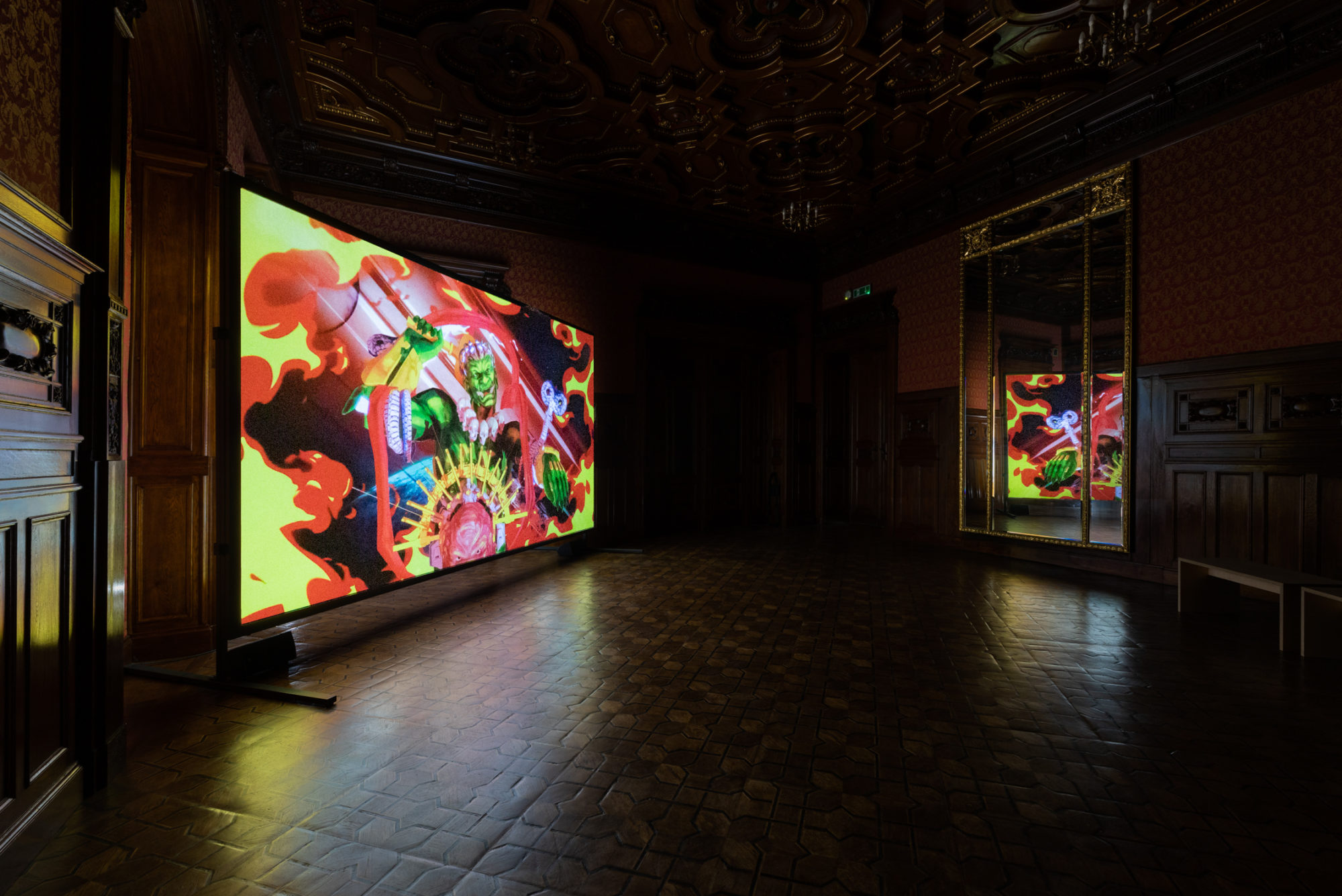
The Earth is Flat Again, exhibition view. Photo by Anna Zagrodzka, courtesy of Muzeum Sztuki
Whether we can truly escape this condition is questioned from the very beginning, with the entrance to the exhibition space nosily haunted by Carolyn Lazard’s piece Conspiracy (2017), a collection of white noise machines placed on the ceiling. Usually used as devices for calming, the multiplication of this ready-made creates an opposite effect of a constantly present and disturbing background noise—a kind of white noise for the white cube. Other exhibited works are threaded together through several themes, such as information and communication, science and technology, spirituality and nature, exposing the way that mainstreams and alternatives are already interconnected and existing within each other.
Several Narrative Structures (1999-2000) by Mark Lombardi visualize the complex entanglements between political, financial, military, and media stakeholders and institutions. Lombardi’s painstaking research is transformed into meticulous drawings of diagrams that make observable the otherwise hidden, criminal networks of private interest, with the soft, almost ephemeral media of pencil on paper illustrating the destructive abuses of power within the global capitalist system. In contrast to proponents of the deep state theory, Lombardi’s work shows that the seemingly secret networks of power are possible to identify and consist of people and institutions that are already globally well-known. In an ironical twist, the bizarre but no-less-conspiratorial trajectories of pop-cultural phenomena are more difficult to describe and comprehend, as showcased by Michael Stevenson’s pieces Drum Shield Affordance (2020), glass vitrines filled with artifacts depicting the story of Hulk Hogan’s sex-tape scandal or the life of the American astronaut-turned-evangelist James Irwin. In a similar kind of countermovement, Suzanne Treister’s works Hexen 2.0 (2009-11) shift the established narrative by depicting the history of Macy Conferences, a series of interdisciplinary meetings in New York in the 1940s and 1950s centered around cybernetics and systems theory, as a set of tarot cards. The visual language of tarot—which in fact has a several centuries old tradition—expresses the unfathomable, magical, and even psychedelic dimensions of modern science.
Conversely, the room-filling installation of Szymon Kobylarz A Man Who Did Not Live Through the End of the World (2021) creates a contrasting experience by bringing together two of the artist’s earlier works—a Kubrickian setup consisting of a dismantled space capsule and wooden, branch-like materializations inspired by fractal geometry and the Fibonacci sequence. With a scenographic quality, Kobylarz’s installation uses sleek, scientific design to create an environment that reflects the chaotic and paranoiac conspiratorial spirit of those preparing for the end of the world. That science can also have a conspiring element is embodied in Zuza Piekoszewska’s objects Future Traveler (2020), whose bug-like resemblance refers to the uncanny usage of insects in surveillance technology. These pieces are some of the many that set forward the notion that the threads of the comprehensible, rational and scientific, and the inexplicable, irrational and non-scientific are in fact knitted together through the realms of the real and the fictional.
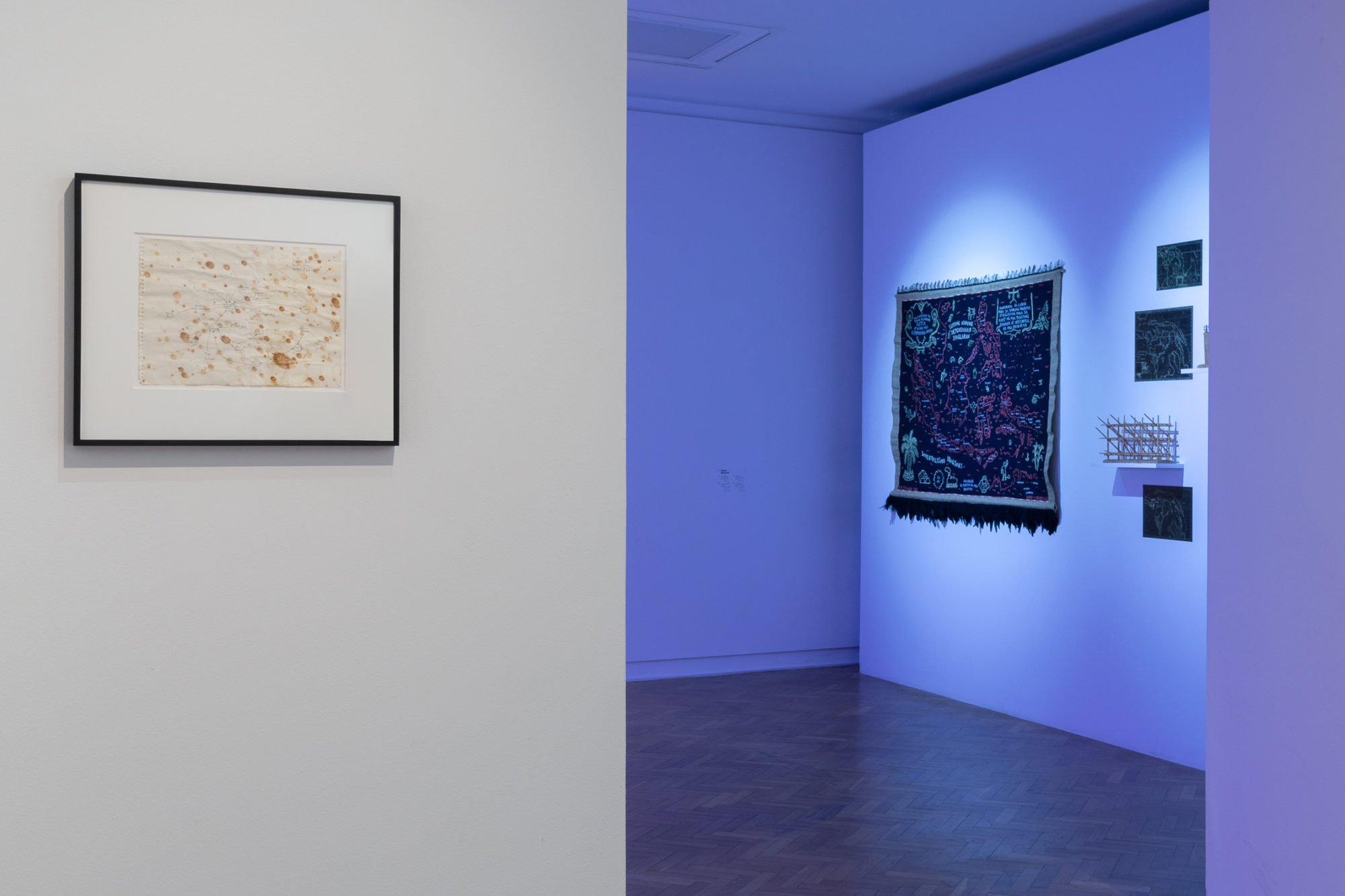
The Earth is Flat Again, exhibition view. Photo by Anna Zagrodzka, courtesy of Muzeum Sztuki
Transcending the physical and the psychological is explored in Lu Yang’s video piece Electromagnetic Brainology (2017), which uses the aesthetics of manga and anime to visualize activities in the nervous system released by neurosurgical procedures used in treating conditions such as Parkinson’s disease. The large, dark, wooden-clad room of the museum’s nineteenth century Poznański Palace is strikingly illuminated by Lang’s gender-neutral avatars based on computer games and Buddhist and Hindu iconography, revealing new territories that shift the borders between the mind and body as well as gender and sexuality. New territories are also investigated by Cian Dayrit’s exercises in counter-cartography Monuments of the Great Divide (2019) and We Move Among Monsters (2020) that offer a visual reshaping of the world set up by Western imperialism and colonialism. Contrary to their seemingly neutral and objective depictions, Dayrit reveals maps as visual, knowledge-producing objects embedded in systems of control, agency and violence that shape the imaginary of the world through a narrow, but hegemonic perspective of the dominant power. In response, Dayrit’s work of alternative cartography represents a conspicuous political and emancipatory act of re-positioning the marginalized and the oppressed.
Several artists build on indigenous knowledge as a decolonizing and counterhegemonic epistemology that fosters alternative frameworks of interpretation and imagination. Tabita Rezaire’s video piece Premium Connect (2018) considers the way that information and communication technologies echo biological systems of fungi or the spiritual systems of African divination. More than simple reflections, the natural and the spiritual are means of dismantling and decentralizing Western-centric dichotomies by proposing new ways of conceiving science and communication. Simultaneously obvious and unexpected, the power of organisms and ecological systems in the search for new interpretative paradigms points to the still-underestimated subversiveness of the natural world that surrounds us. In times of environmental crisis, our planet and nature once again appear as powerful sources of materials and strategies needed to propose a radically different vision of the future from the present that is destroying us.
A preoccupation of Jakub Gawkowski’s previous work, such as the exhibition project The Most Beautiful Catastrophe (2019), redefining the relationship between the human and non-human world in light of ecological disaster is thematized by a number of artists as a challenge to the knowledge on the past as well as the future.(Jakub Gawkowski, The Most Beautiful Catastrophe (exhibition presented by Kronika Center for Contemporary Art, Bytom, December 1, 2018-January 9, 2019). https://kronika.org.pl/en/exhibitions/the-most-beautiful-catastrophe) Several pieces from the series Zoe-therapy (2015) by Diana Lelonek—with whom the curator continuously works—represent a collection of fungal and bacterial colonies growing on portraits of Western European thinkers.(Jakub Gawkowski, “Seaberry Juice in Extractivist Ruins: The Cosmopolitical Art of Diana Lelonek,” Art Margins Online, August 15, 2019. https://artmargins.com/seaberry-juice-in-extractivist-ruins-the-cosmopolitical-art-of-diana-lelonek/) Literally eaten by mold, the Western, male intellectual canon is problematized as outdated and toxic, and in need of a reversal of historically dominant hierarchical structures. Luiza Prado de O. Martins’ installation The imaginary becomes complete on the margins of every new linear projection (2019) consists of branches of the ayoowiri plant that mimic the shape of Brazil’s three rives— Maracanã, Pedras, and Gedes. The water dripping from the branches into teacups placed on a table underneath speak of the history of the ayoowiri plant growing on the banks of Maracanã, which the enslaved indigenous and African communities used for its abortifacient properties during the European colonization of Brazil. The imagery of the plant and river-flow connect the artist’s own experience with abortion to those of her female ancestors, and relate to broader relationships between colonization and domination, but also solidarity and communal care centered around indigenous knowledge.
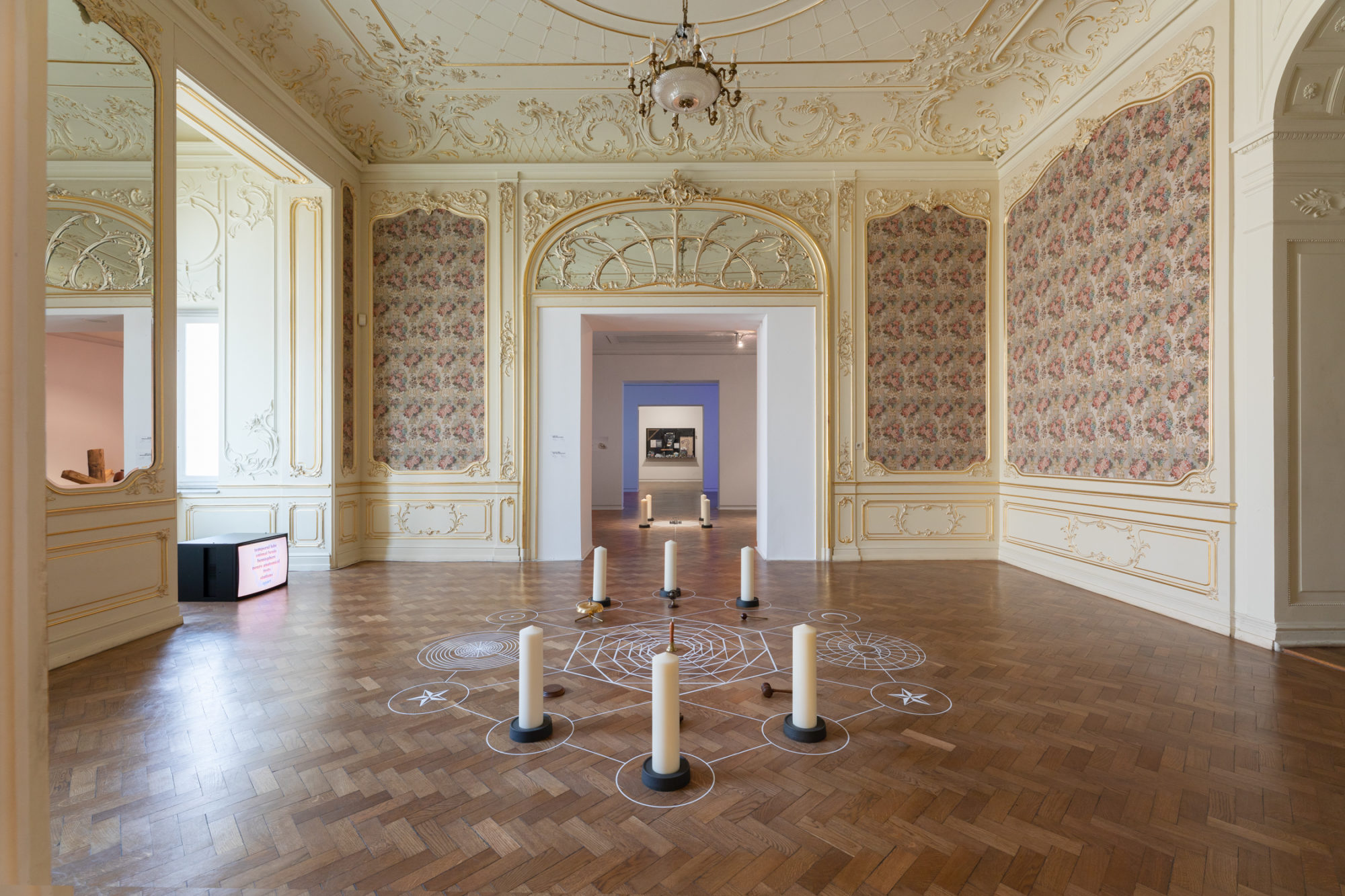
The Earth is Flat Again, exhibition view. Photo by Anna Zagrodzka, courtesy of Muzeum Sztuki
The principal room of the exhibition is symbolically taken over by Jakub Woynarowski’s installation Templum (2021), a geometrical set of lines and shapes on the floor surrounded by candles, which interlaces the museum’s historical salon with the ubiquitous white cubes. In an uncanny fashion the setup of the pattern gives away a flair of occult rituals, but on closer examination is based on the scientific imagery of diagrams and infographics. The work is part of Woyanorwski’s series Novus Ordo Seclorum, in which the artist tries to connect different artistic practices with Masonic aesthetics and produce a kind of conspiratorial history of art. By occupying the core of the exhibition space, Woynarowski’s subversion of established historical narratives questions the role of the museum as a knowledge-producing institution and bastion of the Western canon. Although initially conceived as a modern institution, in the exhibition’s challenging of artificial, shifting borders between modernity and tradition the question that arises is which side is the museum really on.
Both the recent cultural politics and political culture in Poland prove the relevance of the question of the museum’s role in contemporary society. The thought-provoking exhibitions in Muzeum Sztuki appear in the shadow of the takeover of Poland’s large state-funded cultural institutions under the government of the Law and Justice party and its minister of culture Piotr Gliński. The process of replacing several museum directors with figures more in line with the promotion of the ruling party’s misogynist, homophobic, and xenophobic agenda already affected the Ujazdowski Castle Centre for Contemporary Art and the Zachęta National Gallery of Art in Warsaw.(Dorian Batycka, “Right-wing director begins overhaul of Warsaw contemporary art centre,” The Art Newspapers, February 25, 2020. https://www.theartnewspaper.com/2020/02/25/right-wing-director-begins-overhaul-of-warsaw-contemporary-art-centre . Richard Unwin, “Shock as Janusz Janowski appointed new director of Poland’s leading Zacheta National Gallery of Art by right-wing culture minister,” The Art Newspapers, December 3, 2021. https://www.theartnewspaper.com/2021/12/03/shock-and-dismay-as-polands-right-wing-minister-of-culture-appoints-janusz-janowski-as-new-director-of-leading-zacheta-national-gallery-without-a-transparent-competition) Even if one does not believe in the radically transformative potential of a historically immutable institution such as the museum, the occupation of artistic institutions in the effort to emit a homogenized message of national culture belonging only to the dominant group excludes any kind of critical reflection as well as puts the already precarious lives of cultural workers in even more danger.
In contrast, by showing that there are in fact no simple dichotomies, the exhibition, as Gawkowski writes in the catalogue, proposes to “transform the museum, as a space of classification, into a space where differences can coexist.”(The Earth is Flat Again, exhibition catalogue.) With its pluriverse of artistic experiences and mediums of expression, the exhibition impressively shows the possibility of this coexistence, and displays the power of “sciences from below” through the way that alternative and democratizing forms of imagination open new avenues of thinking about the future that feel simultaneously utopian, but also possible, and necessary. If propositional imagination, as George Monbiot writes, is the basis for our hope in the future, the historicization of scientific paradigms as involved in unequal power relations and the parallel discovery of other forms of knowledge supports the process of reconfiguring the position of science in contemporary society.(George Monbiot, Out of the Wreckage: New Politics for an Age of Crisis (Verso Books: London & New York, 2017), p. 7.) Unlike the growing, dangerous movements to completely discard it, this process of reconfiguration tries to help science gain new societal ground by transforming its modus of thought and operation. To follow the lines of sociologist Boaventura de Sousa Santos, “[p]olitical resistance (…) needs to be premised on epistemological resistance.”(Boaventura de Sousa Santos, “Beyond Abyssal Thinking: From Global Lines to Ecologies of Knowledges,” Review (Fernand Braudel Center), vol. 30, no. 1 (2007), p. 20.) Recent global circumstances show us that this kind of resistance is still incredibly difficult, while at the same time essential.

